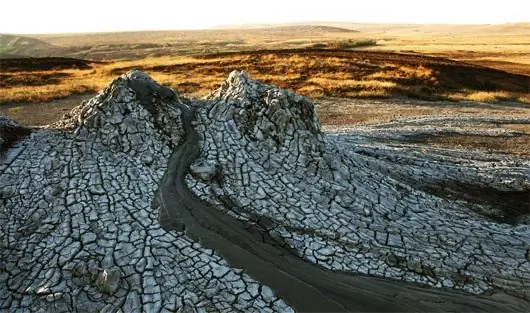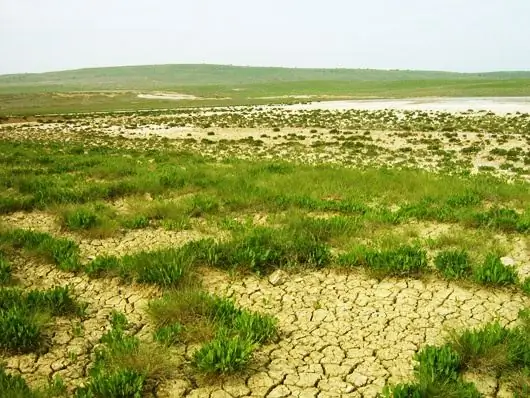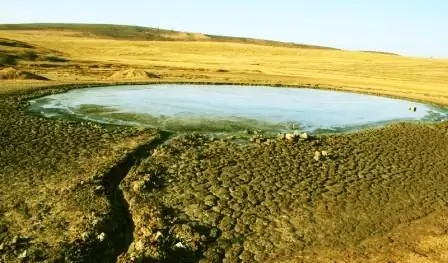There are more than 50 active volcanoes on the Kerch Peninsula: high and almost flat, periodic and constantly active. They only spew mud, not lava flows.

Instructions
Step 1
A significant accumulation of Crimean mud volcanoes is located on the Kerch Peninsula - 8 kilometers north of Kerch there is the village of Bondarenkovo (formerly Bulganak), near which the Bulganak quarry is located, which extracts limestone and produces limestone flour. The Crimean Tatar name Bulganak is associated with the word Bulganak - dirty, muddy. Bulganak field is a real triumph of mud. Here, the most varied, conical and lake-like volcanoes flow with mud. Mud in wide, sometimes up to 20 meters in diameter, craters pulsates and bubbles, whitish clouds of gas occasionally rise above it. The slopes of the hills are covered with cracked brownish-gray crust, and in the middle of the hills there is a lake, also filled with liquid mud.
In this incomprehensible, semi-liquid landscape, the lake is constantly changing its shape due to the flow of mud. Mud volcanoes spew cold clay and gas. The temperature of this liquid clay is about 19 degrees. Bulganak hills constantly emit small portions of gas with mud and in this way are unloaded from excess pressure at depth. Mud volcanoes are a desert space, on which from time to time bubbles of mud blow up and whole streams of it burst out. They were formed 25-30 million years ago due to the fact that a mixture of gas, water and clay found its way out through breaks in the earth's crust. It is believed that the depth of mud volcanoes reaches 6-9 kilometers. Such natural volcanoes are diverse. Some are indistinguishable from a muddy puddle, while others look just like the volcanoes we are accustomed to, only their size is much smaller.

Step 2
But more than once the mud abyss has sucked in cows, goats and other domestic animals. And during World War II, the German tank decided to shorten the path and drove straight through the "puddle". The combat vehicle could not be saved, and it was quickly sucked in by the mud volcano together with the crew. The large amount of bromine in the mud remains incomprehensible to geologists. It settles on the edges of the craters with a very picturesque white fringe, similar to fur or mold, but soon, like mud, dries up.
Bulganak hills are understandable only on the surface, scientists only speculate about what actually happens in the depths. The hills operate constantly, emitting dirt without stopping, thus insuring themselves against rare, but violent eruptions. Only occasionally, the mud gushes with a fountain, but its height is no more than 10 meters.

Step 3
In general, the view of the Bulganak Valley resembles more the landscape of some fantastic planet than the area near Kerch. The mud contains iodine, borax and soda, which are beneficial for human health. Therefore, it is useful to breathe in the healing air saturated with iodine vapors there.






